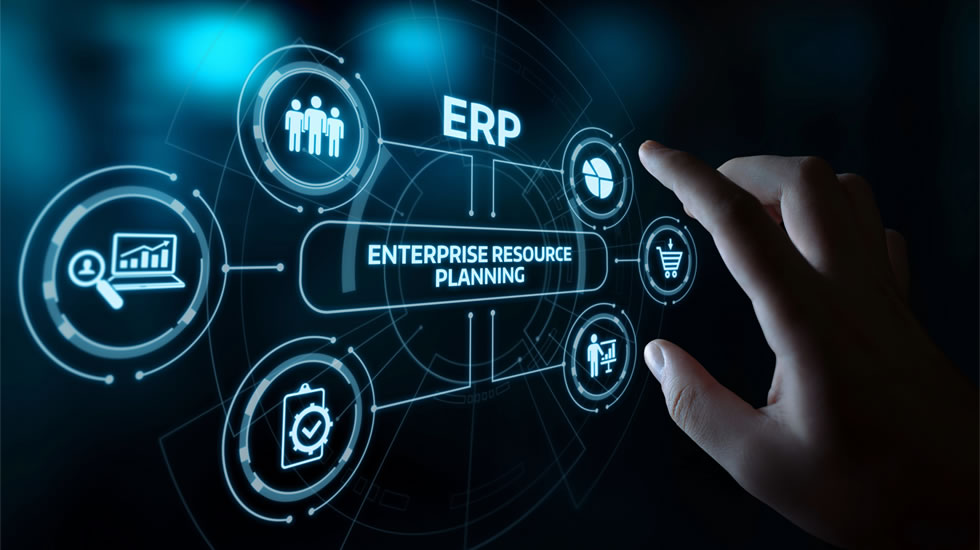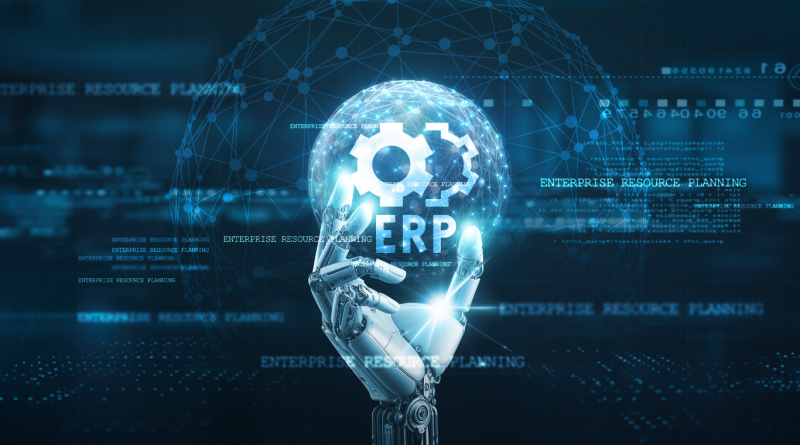Organizations rely on ERP to streamline their business processes and improve their operational efficiency However, this system is not without some constraints, and institutions may face challenges in maximizing their potential, Therefore, organizations need to take these limitations carefully into account when selecting and implementing ERP so that it can achieve higher operational efficiency, improve the decision-making process and enhancing competitive advantage, what are these constraints and how can they be overcome?, That's what we'll recognize in our article for today, read on.

ERP Resource System Concept
ERP is an integrated enterprise software application to manage and coordinate all fundamental aspects of their business operations. ERP is designed to streamline and automate various business processes, such as accounting, human resources, inventory management, supply chain logistics and customer relationship management, within a single centralized system.
The primary purpose of ERP is to provide a comprehensive and timely view of the company's key operational data and business processes by integrating all the core functions of the enterprise into one coherent system, enabling ERP to better share data, increase efficiency and make more informed decisions.
What are the limitations of ERP?
ERP system constraints that enterprises and companies may face regardless of size include:
- Complexity: ERP system is very complex, and its implementation and management can be difficult, especially for small enterprises with limited IT resources.
- Customization challenges: ERP systems are usually designed to be generic, which can be difficult to customize to meet an organization's specific needs.
- Cost: ERP system implementation and maintenance can be costly, especially for SMEs, due to software, hardware, training and ongoing support costs.
- Data integration: Integrating data from different systems and departments within an organization may be a major challenge, as the best erp software may not always communicate seamlessly with other software or legacy systems.
- Inflexibility: ERP systems may be inflexible, making it difficult to adapt to changes in business processes or market conditions.
User accreditation: Employees may resist using ERP, especially if it requires significant changes in normal workflow or if the system is not user-friendly.
- Monopoly by one supplier: Companies may rely on a specific ERP resource, making it difficult for them to move to another system in the future.
- Security and compliance risks: ERP often contains sensitive and confidential information, which can make it a target of cyber threats and require strict security and compliance procedures.
How to overcome ERP system constraints
Companies and institutions need to address the limitations of the ERP material management system mentioned and others, and can do so through some methods, from which we state:
1. Customization and flexibility
ERP systems are often designed to be generic, meeting the needs of a wide range of industries and business models, This may lead to a lack of flexibility in adapting the ERP accounting system to the organization's unique requirements and to overcome this constraint, organizations should consider investing in customization and configuration options within the ERP system This may include modifying existing modules, integrating external applications, or developing customized accessories to meet specific business needs.
2. Integration with other systems
ERP systems are often applied as a major hub for enterprise data and operations, but may not integrate seamlessly with other systems, such as customer relationship management (CRM), supply chain management (SCM), or business intelligence tools (BI), to address this shortfall, organizations should focus on improving data integration and compatibility between ERP and other important business applications, and this can be achieved through the use of enterprise application integration (EAI) techniques, web services, or specially designed interfaces.
3. Reports and analysis
Although ERP typically provides a range of reporting and analytical capabilities But it may not always provide the level of detail, flexibility or insights that organizations need, To overcome this shortfall, organizations should explore advanced business intelligence and data visualization tools that can be integrated with ERP's accounting programme. This will help decision makers gain deeper insights into the institution's performance, identify trends and make more informed strategic decisions.
4. User accreditation and change management
ERP application can represent a significant organizational change and that staff members' resistance or lack of support for the system may impede the effectiveness of the system, To address this shortfall, organizations should focus on effective change management strategies, Including comprehensive training programs, clear communication, and continuous user support This can help ensure staff members' comfort in using the new system and their ability to take full advantage of its potential.
5. Scalability and Performance
ERP system must be with enterprise development capable of expanding to accommodate increased data volumes, user requirements, and business complexities, If ERP is not designed to deal with these changes to overcome this limitation ", may face performance problems or become an obstacle Organizations should assess the system's scalability and performance requirements during the implementation phase, Consider upgrading it or moving to ERP is more robust as needed.
6. Compliance and regulation requirements
ERP systems must often comply with sector regulations data privacy laws, and other compliance standards, if ERP does not adequately meet these requirements, It may expose the institution to legal and financial risks, and to overcome this limitation, Organizations should ensure that ERP is equipped to meet all relevant compliance and regulation requirements, and must regularly review and update the ERP system to keep pace with changing regulations.
Conclusion:
In conclusion, institutions must balance ERP's potential advantages with challenges and constraints, develop a comprehensive strategy to effectively address these problems, and by understanding the limitations of ERP systems and taking proactive measures to mitigate them, enterprises can maximize the value of their ERP investments and achieve their business objectives more effectively.
other topics:
reference:
1. <<5 Essential Benefits of Choosing an Efficient ERP System>>, readwrite
2. <<Reasons to Use ERP Systems in Businesses>>, enterprisetalk

Add New Comment